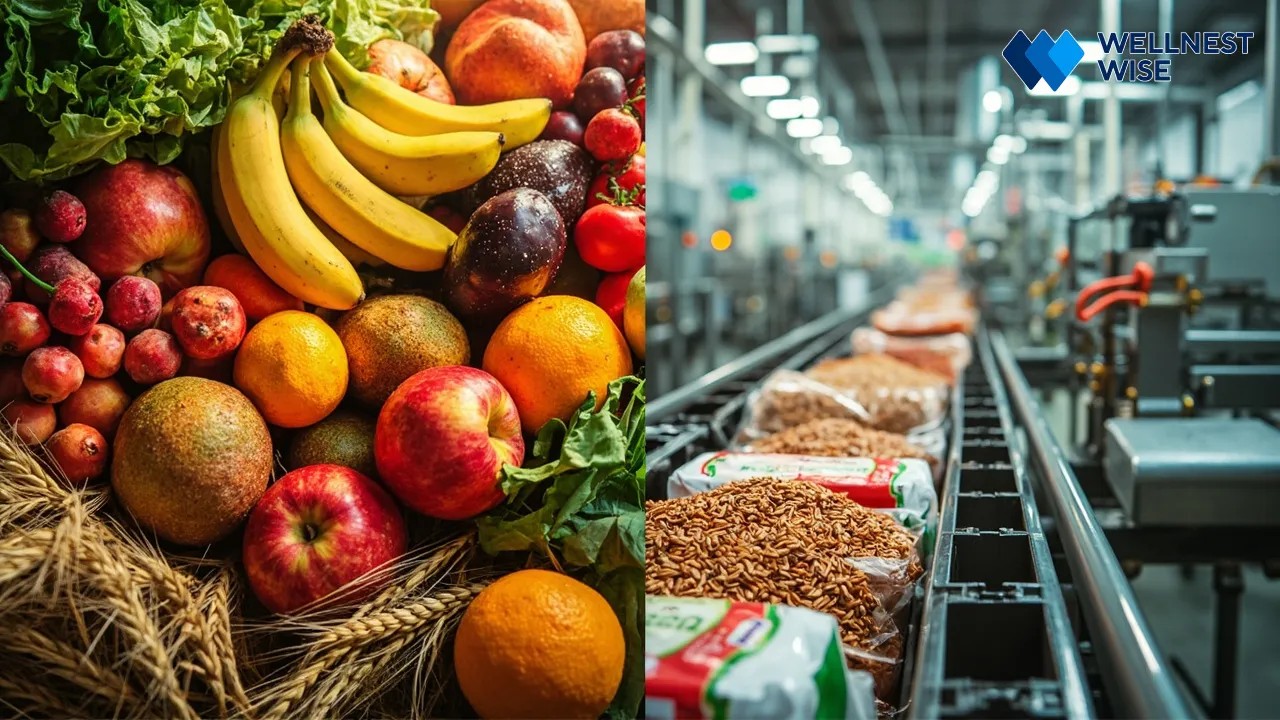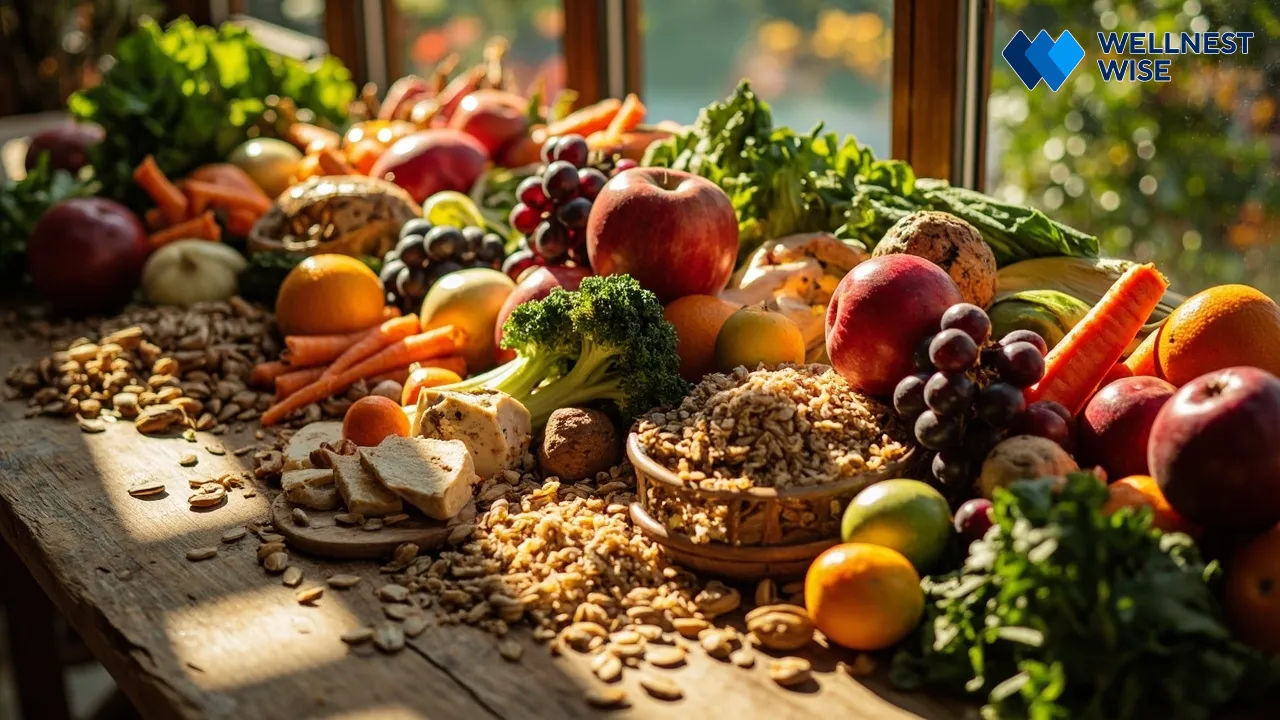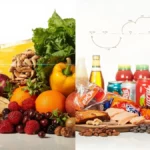Imagine a world where the foods we grab for convenience could quietly be shortening our lives. It’s a sobering thought, but one that a growing body of scientific evidence is bringing into sharp focus: ultra-processed foods (UPFs) are increasingly linked to serious health risks, including increased mortality rates. For many, the busy pace of modern life makes these readily available, often appealing products a dietary staple. But what if understanding this connection could empower us to make choices that truly enhance our longevity? Let’s delve into the science and discover practical ways to safeguard our health.
Deconstructing Ultra-Processed Foods: Definition and Classification
When we talk about food, we often think in simple terms: good or bad. Yet, the reality is far more nuanced, especially when it comes to food processing levels. Understanding what distinguishes an ultra-processed food from a simply processed one is the first critical step toward making informed dietary choices. It’s not just about a label; it’s about how the food is made and what goes into it.

What Exactly Are Ultra-Processed Foods (UPFs)?
Ultra-processed foods are industrial formulations typically made with substances extracted from foods (like casein, lactose, or whey protein) or synthesized in laboratories (such as hydrogenated oils, modified starches, or flavor enhancers). They often contain numerous additives—preservatives, artificial flavors, colors, emulsifiers, and sweeteners—designed to enhance palatability, texture, and shelf-life. Think of items like sugary drinks, packaged snacks, instant meals, and many breakfast cereals. These foods are designed to be convenient, highly palatable, and often inexpensive, making them attractive but potentially detrimental to health.
The NOVA Classification System: Understanding Food Processing Levels
To help us understand the spectrum of food processing, researchers developed the NOVA classification system. This system categorizes foods into four groups based on their nature, purpose, and the extent of industrial processing:
- Unprocessed or Minimally Processed Foods: These are whole foods in their natural state or with minor alterations that don’t add new ingredients (e.g., fresh fruits, vegetables, whole grains, nuts, fresh meat, milk).
- Processed Culinary Ingredients: Substances obtained directly from Group 1 foods through processes like pressing or milling (e.g., vegetable oils, butter, sugar, salt). They are generally not consumed on their own but used to prepare meals.
- Processed Foods: Relatively simple products made by adding salt, sugar, oil, or other processed culinary ingredients to Group 1 foods to preserve them or make them more palatable (e.g., canned vegetables, simple bread, cheeses, cured meats).
- Ultra-Processed Foods (UPFs): As described above, these are industrial formulations of several ingredients, including those not typically found in home kitchens, plus many additives. They are ready-to-eat or ready-to-heat and designed to be hyper-palatable and convenient.
Key Characteristics of UPFs: Beyond Nutritional Content
While many UPFs are known to be high in added sugars, unhealthy fats, and sodium, their impact extends beyond mere nutritional content. A defining characteristic is their industrial formulation and the presence of cosmetic additives. These foods are often engineered to be highly addictive, overriding the body’s natural satiety signals. They’re typically low in fiber, vitamins, and minerals found in whole foods, creating a paradox where they are energy-dense yet nutritionally poor. The goal is often profit-driven, focusing on extended shelf life and maximal palatability rather than health.
Distinguishing UPFs from Minimally Processed and Processed Foods
The distinction is crucial. A simple loaf of whole-grain bread with a few ingredients (flour, water, yeast, salt) is a processed food. A highly refined white bread with multiple additives, preservatives, and conditioners is likely an ultra-processed food. Canned beans are processed; instant noodle cups with flavor packets and various unidentifiable ingredients are ultra-processed. The key lies in the extent of industrial transformation and the type and number of ingredients involved. Understanding this helps us identify the true culprits in our diet that contribute to ultra-processed foods health risks.
The Alarming Truth: Scientific Evidence Linking UPF to Increased Mortality
The idea that our diet significantly impacts our health is not new. But the sheer volume of modern research specifically targeting ultra-processed foods and early death is compelling. It’s a stark reminder that convenience often comes at a cost, with numerous studies now illustrating a clear, concerning connection between high UPF intake and a shortened lifespan. This isn’t just about weight gain; it’s about fundamental impacts on our longevity.

Meta-Analyses and Cohort Studies: Global Insights into UPF and Early Death
Numerous meta-analyses and large-scale cohort studies from around the globe have consistently reported a positive association between higher consumption of UPFs and an increased risk of all-cause mortality. For instance, a comprehensive review of several prominent studies found that individuals with the highest intake of UPFs experienced a significantly elevated risk of premature death compared to those with the lowest intake. These findings, often with hazard ratios ranging from 1.1 to 1.3 for highest versus lowest consumers, highlight a concerning global trend that transcends specific populations, including those in high-income countries where UPF consumption can constitute 50% or more of daily caloric intake.
Understanding All-Cause Mortality and Specific Disease Risks from UPFs
The term “all-cause mortality” refers to death from any cause. When studies link UPFs to increased all-cause mortality, it indicates a broad detrimental impact on overall health and survival. Beyond this general risk, researchers are pinpointing specific diseases that appear to be heavily influenced by UPF consumption.
The Critical Connection: Ultra-Processed Foods and Cardiovascular Disease
Perhaps one of the most robust links identified is that between ultra-processed foods and cardiovascular disease. Studies have consistently shown that a diet high in UPFs significantly elevates the risk of heart attacks, strokes, and other cardiovascular events. This is attributed to several factors inherent in UPFs, including high levels of added sugars, unhealthy trans and saturated fats, and sodium, all known contributors to hypertension, dyslipidemia, and arterial stiffness. The impact of UPF diet longevity is particularly visible in the health of our hearts.
The Emerging Link: UPF, Cancer Incidence, and Type 2 Diabetes
Beyond heart health, a growing body of evidence suggests an emerging link between UPF consumption and an increased risk of certain cancers, as well as a higher incidence of Type 2 Diabetes. The mechanisms are complex but are thought to involve chronic inflammation, oxidative stress, weight gain (obesity is a known risk factor for many cancers and diabetes), and the presence of harmful additives or contaminants. For example, some studies suggest a correlation between UPF intake and breast or colorectal cancer, while others highlight the role of sugary UPFs in disrupting blood sugar regulation, leading to insulin resistance and eventually Type 2 Diabetes.
Interpreting the Data: Confounding Factors and Robust Findings in Dietary Patterns Mortality
While some critics argue that the observed correlations might reflect broader dietary patterns mortality and socioeconomic factors—such as individuals with lower incomes having greater access to cheaper UPFs—many studies account for these potential confounding factors. Even after adjusting for lifestyle, education, and other dietary components, the association between UPF intake and adverse health outcomes often remains significant. This suggests that UPFs exert independent effects on health, likely through a combination of their poor nutritional quality, the presence of various additives, and their impact on satiety and overall caloric intake. The consistency of findings across diverse populations lends considerable weight to these robust conclusions.
Unpacking the Mechanisms: How Ultra-Processed Foods Compromise Longevity
The question isn’t just if ultra-processed foods are harmful, but how. The science reveals a complex interplay of physiological processes where these industrial food products interfere with our body’s natural functions, contributing to chronic disease and, ultimately, shortening our longevity. It’s a silent assault on our internal systems, far beyond just adding extra calories. Understanding these mechanisms helps us appreciate the profound impact of UPF on health.

Inflammation and Oxidative Stress: Core Pathways of UPF-Induced Harm
Two of the most significant pathways through which UPFs compromise health are chronic inflammation and oxidative stress. UPFs often contain ingredients like trans fats, refined sugars, and certain additives that can trigger an inflammatory response in the body. This isn’t the acute inflammation you experience after an injury; it’s a low-grade, persistent inflammation that silently damages cells and tissues over time. Similarly, these ingredients can lead to oxidative stress, an imbalance between the production of free radicals and the body’s ability to counteract their harmful effects. Both inflammation and oxidative stress are foundational to the development of chronic diseases such as cardiovascular disease, cancer, and neurodegenerative disorders.
Disrupting the Gut Microbiome: Impact on Overall Digestive Health
Our gut is home to trillions of microorganisms, collectively known as the gut microbiome, which play a critical role in digestion, immunity, and even mood. UPFs, typically low in fiber and rich in artificial sweeteners and emulsifiers, can profoundly disrupt this delicate ecosystem. A diet high in UPFs has been shown to reduce the diversity of beneficial gut bacteria and promote the growth of less desirable species, leading to gut dysbiosis. This imbalance can impair gut barrier function, allowing harmful substances to enter the bloodstream, further fueling systemic inflammation and negatively impacting overall digestive health and nutrient absorption.
Nutritional Deficiencies and Energy Density: The Paradox of UPF Consumption
Here lies a perplexing paradox: UPFs are often energy-dense (high in calories) but simultaneously contribute to nutritional deficiencies. They are typically stripped of essential vitamins, minerals, and fiber during processing. While they provide quick energy, they leave the body hungry for actual nutrients. This lack of essential micronutrients can impair countless bodily functions, from immune response to metabolic regulation. Consuming large amounts of these “empty calories” displaces more nutritious whole foods, leading to a diet that satisfies hunger but starves the body of what it truly needs for optimal health.
Additives and Contaminants: Unseen Risks in Processed Foods
Beyond their macronutrient profile, the various additives and contaminants present in UPFs pose another layer of risk. Artificial sweeteners, emulsifiers, preservatives, and colorings, while deemed safe in small doses, have cumulative effects that are still being investigated. Some studies suggest a link between certain additives and metabolic dysfunction or alterations in the gut microbiome. Furthermore, the manufacturing processes for UPFs can introduce environmental contaminants or chemicals from packaging, adding to the potential unseen health burden.
Behavioral and Psychological Factors: The Cycle of Cravings and Overconsumption
The design of UPFs isn’t accidental. They are engineered for “hyper-palatability,” triggering strong reward responses in the brain. This can lead to a cycle of cravings and overconsumption, making it difficult to regulate intake. The combination of sugar, fat, and salt, often presented in convenient, attractive packaging, exploits our innate preferences, leading to a form of dietary addiction. This constant overeating, driven by behavioral and psychological factors, contributes to obesity, which in itself is a major risk factor for numerous chronic diseases and reduced longevity.
Identifying and Reducing Ultra-Processed Foods: A Practical Guide
Taking control of your diet starts with empowerment, and that means knowing what you’re up against. Identifying and reducing ultra-processed foods might seem daunting in our fast-paced world, but with the right strategies, it’s entirely achievable. This section provides a practical roadmap to navigate the modern food landscape, helping you make healthier choices that significantly impact your long-term well-being and UPF diet longevity.

Decoding Food Labels: Ingredients to Watch Out For
Becoming a food label detective is one of the most powerful tools in your arsenal. The ingredient list is where the truth lies. Look for:
- Long ingredient lists: Generally, the shorter the list, the less processed the food.
- Unfamiliar names: If you can’t pronounce it or don’t recognize it as something you’d find in your kitchen, it’s likely an industrial additive.
- Added sugars: Look for terms like high-fructose corn syrup, glucose syrup, maltodextrin, dextrose, sucrose, and fruit juice concentrate. These indicate hidden sugars beyond what’s naturally in a food.
- Hydrogenated or partially hydrogenated oils: These are sources of unhealthy trans fats.
- Artificial flavors, colors, and preservatives: While many are deemed safe in small amounts, their cumulative effect and contribution to “empty calories” should be considered.
- Emulsifiers and thickeners: Examples include carrageenan, cellulose gum, and polysorbates.
Common UPF Suspects in Everyday Shopping Carts
Being aware of the typical categories of UPFs can make label reading much easier. Here are some common culprits you might find in your everyday shopping:
- Sugary beverages: Soft drinks, most packaged fruit juices (even “100% juice” can be highly processed and lack fiber), energy drinks, sweetened teas.
- Packaged snacks: Chips, cookies, pastries, candy bars, most breakfast cereals (especially those marketed to children).
- Instant meals: Instant noodles, microwaveable dinners, certain frozen pizzas, processed meat-based meals.
- Processed meats: Hot dogs, sausages, deli meats, chicken nuggets, meat substitutes that are heavily processed.
- Sweetened dairy products: Many flavored yogurts, ice creams, and dairy desserts.
- Certain breads and baked goods: Mass-produced white bread, many supermarket muffins, and cakes with long shelf lives.
Strategies for Reducing UPF Intake Gradually
Embarking on a UPF-reduction journey doesn’t have to be an overnight overhaul. Gradual, sustainable changes are key. Start by identifying one or two UPF categories you consume regularly and find healthier alternatives. Perhaps you swap your sugary cereal for oatmeal, or your afternoon soda for water infused with fruit. Small victories build momentum and confidence. Focus on adding more whole foods rather than obsessing over completely eliminating UPFs initially.
Making Smart Swaps: Transitioning from UPF to Healthier Alternatives
This is where practicality meets health. Instead of feeling deprived, think about smart replacements. Craving something sweet? Reach for a piece of fruit or a small handful of nuts. Want a crunchy snack? Opt for homemade popcorn or vegetable sticks with hummus. These transitions can feel challenging at first, but your taste buds will adapt, and you’ll find new favorites. This intentional replacement is critical for lowering ultra-processed foods health risks.
Mindful Shopping: Navigating the Supermarket Aisle for Longevity
The supermarket can be a minefield of UPFs, but with a mindful approach, you can navigate it successfully. Stick to the perimeter of the store where fresh produce, meats, dairy, and whole grains are typically found. When you venture into the inner aisles, have a list and scrutinize labels. Focus on ingredients rather than marketing claims. Shop more frequently for fresh items and consider shopping at local markets where whole, unprocessed foods are abundant. This conscious approach helps you choose foods that support dietary patterns mortality in a positive way.
Cultivating a Whole Food Lifestyle for Enhanced Longevity
Moving beyond merely reducing UPFs, the ultimate goal for many is to embrace a whole food lifestyle. This approach centers on nourishing your body with foods as close to their natural state as possible, prioritizing health, vitality, and true longevity. It’s not about strict rules, but about a philosophy of eating that reclaims control over your nutrition and fosters a deeper connection with what you consume.

Prioritizing Whole, Minimally Processed Foods: The Foundation of a Healthy Diet
At the heart of a truly healthy diet is the prioritization of whole, minimally processed foods. This includes fresh fruits and vegetables, legumes, whole grains (like brown rice, quinoa, and oats), nuts, seeds, lean proteins (fish, poultry, eggs, tofu), and healthy fats (avocado, olive oil). These foods are packed with fiber, vitamins, minerals, and antioxidants—all essential for cellular health, disease prevention, and sustained energy. They provide satiety, support a healthy gut microbiome, and help regulate blood sugar, laying a strong foundation for a vibrant, long life.
The Benefits of Home Cooking: Regaining Control Over Your Nutrition
One of the most effective strategies for a UPF-reduced lifestyle is embracing home cooking. When you prepare meals yourself, you have complete control over the ingredients, ensuring you’re using fresh, whole components and avoiding hidden sugars, unhealthy fats, and unnecessary additives. This practice not only enhances the nutritional quality of your meals but also connects you more deeply with your food. Cooking can be a meditative, creative process, and sharing home-cooked meals often strengthens social bonds—another facet of overall well-being. A close friend, once reliant on convenience meals, found that replacing frozen pizzas and instant noodles with home-cooked lentil soup and roasted vegetables significantly improved her energy levels and digestive comfort, illustrating the tangible impact of making food from scratch.
Embracing Traditional Iranian Cuisine: Naturally Rich in Whole Foods
For many Iranian readers, a wonderful advantage lies in the rich heritage of traditional Iranian cuisine. Many authentic Iranian dishes are inherently built upon whole, minimally processed ingredients. Think of hearty stews like Ghormeh Sabzi (herb stew) or Khoresht Bademjan (eggplant stew), rich in vegetables, legumes, and lean meats, often served with fragrant Chelow (steamed rice), which in its brown form is a whole grain. Soups like Ash-e Reshteh are packed with diverse beans, herbs, and noodles. The emphasis on fresh herbs, diverse vegetables, legumes, nuts, and modest use of good quality oils aligns perfectly with a whole food philosophy, making it an excellent cultural foundation for a healthy diet.
Simple Swaps: Transforming UPF Favorites into Nutritious Alternatives
Making the switch from UPFs doesn’t mean giving up deliciousness. Often, it’s about making a clever swap. Here’s a practical guide to transforming common UPF favorites:
| Typical Ultra-Processed Food (UPF) | Whole Food Alternative |
|---|---|
| :——————————— | :————————————————————————————————————————————————– |
| Sugary Cereal | Oatmeal with fresh fruit, nuts, and a sprinkle of cinnamon |
| Packaged Biscuits | Homemade whole-grain cookies (with less sugar), a handful of almonds, or an apple |
| Instant Noodles | Homemade lentil or vegetable soup (made with fresh ingredients), or a quick noodle bowl with broth, fresh veggies, and grilled chicken or tofu |
| Commercial Fruit Juice | Freshly squeezed fruit juice (in moderation, ideally with pulp), or infused water with slices of fruit and herbs (e.g., cucumber and mint) |
| Processed Meat (e.g., Hot Dogs) | Grilled chicken or fish with steamed vegetables, homemade Persian cutlets (Kotlet) made with lean ground meat and fresh herbs |
| Frozen Pizza | Homemade whole-grain pizza with fresh tomato sauce, plenty of vegetables, and a modest amount of cheese |
Meal Planning for a UPF-Reduced and Nutrient-Rich Lifestyle
Effective meal planning is the cornerstone of sustaining a UPF-reduced and nutrient-rich lifestyle. Dedicate some time each week to plan your meals and snacks. This helps you create shopping lists, avoid impulse UPF purchases, and ensures you have healthy options readily available. Batch cooking—preparing larger quantities of staples like cooked grains, roasted vegetables, or stew bases—can save significant time during busy weekdays. By planning ahead, you empower yourself to consistently choose foods that support your health and journey to enhanced longevity.
Empowering Your Journey to a Longer, Healthier Life
The journey to a healthier, longer life is a marathon, not a sprint. It involves conscious choices, a willingness to learn, and a commitment to nurturing your body. By understanding the profound impact of ultra-processed foods on mortality and adopting a whole food approach, you are not just changing your diet; you are investing in your future. Every meal is an opportunity to empower yourself.

Key Takeaways: Recap of UPF Risks and Dietary Impact on Longevity
Let’s recap the crucial insights: Ultra-processed foods (UPFs), with their industrial formulations and myriad additives, are strongly linked to increased risks of all-cause mortality, cardiovascular disease, cancer, and Type 2 Diabetes. This dietary impact on longevity is driven by mechanisms such as chronic inflammation, oxidative stress, gut microbiome disruption, and nutritional deficiencies. By learning to identify UPFs and making mindful swaps for whole, minimally processed foods, you can significantly reduce these ultra-processed foods health risks and pave the way for a healthier, more vibrant life.
Beyond Diet: Holistic Approaches to Health and Overall Well-being
While diet is a cornerstone, achieving holistic approaches to health and overall well-being extends beyond your plate. Regular physical activity, adequate sleep, stress management, and strong social connections all play vital roles in longevity. Think of it as a synergistic approach: a healthy diet fuels your body, exercise strengthens it, rest rejuvenates it, and meaningful relationships nourish your mind and spirit. Each component contributes to a robust foundation for a longer, more fulfilling life.
Seeking Expert Guidance: When to Consult a Nutrition Professional
Making significant dietary changes can sometimes feel overwhelming. If you have specific health concerns, chronic conditions, or simply need personalized guidance, consider seeking expert guidance from a registered dietitian or a qualified nutrition professional. They can provide tailored advice, help you navigate challenges, and ensure your dietary changes are safe, effective, and sustainable. A professional can offer invaluable support in translating scientific evidence into practical, everyday eating strategies that truly fit your individual needs and lifestyle. Take the first step today; your future self will thank you.
Conclusion & Takeaways
The link between ultra-processed foods and increased mortality is a powerful call to action. By understanding what UPFs are, how they impact our bodies, and how to effectively reduce their presence in our diets, we gain agency over our health. Embracing whole, minimally processed foods, especially traditional cuisines rich in natural ingredients, is a pathway to not just a longer life, but a life lived with greater vitality and well-being. Start small, be consistent, and witness the profound transformation in your health.
FAQ
Practical, scientific Q&A
Q1: What makes a food “ultra-processed” versus just “processed”?
A1: The key distinction lies in the extent of industrial processing and the ingredients used. “Processed foods” (like canned vegetables or simple bread) typically have few added ingredients (salt, sugar, oil) to preserve or enhance them. “Ultra-processed foods” (UPFs) are industrial formulations often containing many ingredients extracted from foods or synthesized in labs (e.g., hydrogenated oils, artificial flavors), plus numerous additives not used in home cooking, designed for palatability and long shelf-life. The NOVA classification system helps categorize these differences.
Q2: What are the main health risks of consuming ultra-processed foods?
A2: Scientific research consistently links high UPF intake to increased risks of all-cause mortality, cardiovascular diseases (heart attacks, strokes), Type 2 Diabetes, and certain types of cancer. Additionally, UPFs contribute to obesity, chronic low-grade inflammation, oxidative stress, and gut microbiome disruption, all of which compromise overall health and longevity.
Q3: How do ultra-processed foods impact the gut microbiome?
A3: UPFs are typically low in fiber and often contain artificial sweeteners and emulsifiers. This combination can disrupt the delicate balance of beneficial bacteria in your gut (gut dysbiosis), reducing diversity and potentially promoting the growth of harmful bacteria. A compromised gut microbiome can negatively affect digestion, nutrient absorption, and immune function, contributing to systemic inflammation.
Q4: Can I completely avoid ultra-processed foods in my diet?
A4: While complete avoidance can be challenging in modern society, significant reduction is highly achievable and beneficial. The goal isn’t necessarily 100% elimination, but rather prioritizing whole, minimally processed foods as the foundation of your diet. Focus on making gradual, sustainable swaps and becoming an informed consumer by reading food labels carefully.
Q5: What are some simple steps I can take to reduce my UPF intake today?
A5: Start by swapping sugary drinks for water or infused water. Choose whole fruits over packaged fruit snacks or commercial juices. Opt for oatmeal with fruit and nuts instead of sugary cereals. Focus on home cooking with fresh ingredients as much as possible, and prioritize shopping around the perimeter of the grocery store where whole foods are typically located. Even small, consistent changes make a big difference for your dietary impact on longevity.















